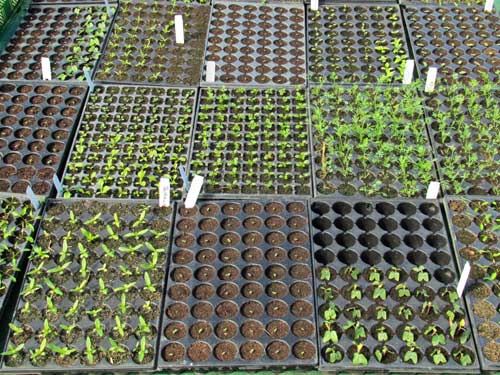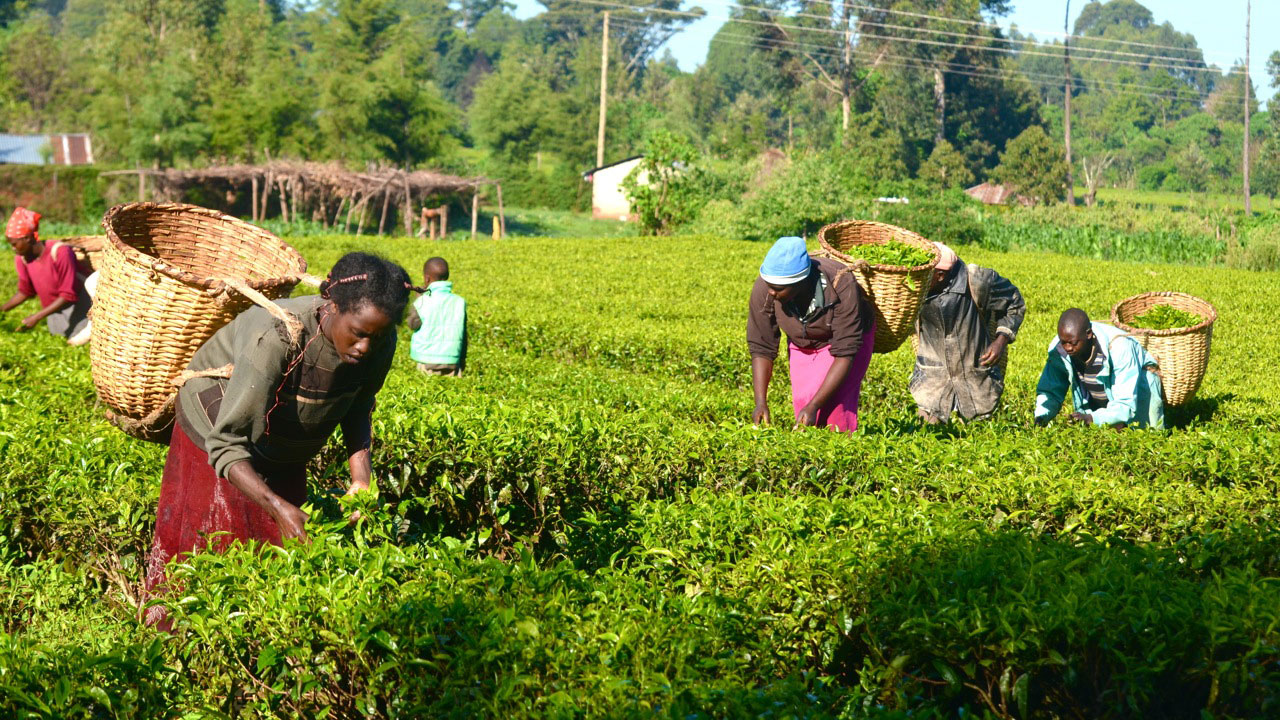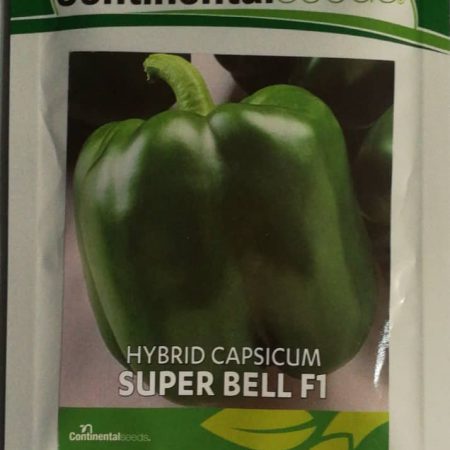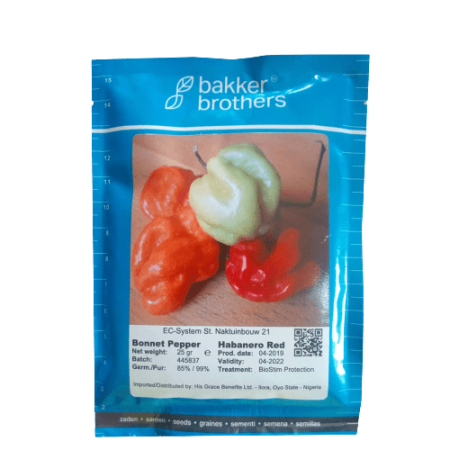How to Grow Hot Pepper and Make Money

How to Grow Hot Pepper and Make Money
Pepper has a place with the Solanaceae family. Different individuals from this family incorporate tomato, tobacco, eggplant, and Irish potato. There are various assortments of pepper accessible to look over. You simply need to go to the pepper vendors in your general vicinity and discover the assortment that business well. At that point visit a state service of Agric. furthermore, discover where you can purchase the seeds. A few groups who sell agro-synthetic substances in business sectors may likewise sell seeds.
Is there cash to be made in pepper cultivating? Indeed. Pepper develop in 3-4 months and with legitimate upkeep, you can gather it constantly for a half year or more. You’ll get substantially more cash-flow in the event that you approach water system offices so you can inundate your plants during the dry season. This can either be as borehole or stream/waterway. In many spots in Nigeria, you can undoubtedly lease farmlands that are near streams that streams even in the dry season.
-
Sweet Pepper Seeds-Superbell F1- (Continental seeds)₦5,000.00Rated 3.75 out of 5 based on 4 customer ratings
-
BAKER BROTHER BONNET PEPPER 1₦10,000.00Rated 3.75 out of 5 based on 4 customer ratings
Is there cash to be made in pepper cultivating? Indeed. Pepper develop in 3-4 months and with appropriate support, you can reap it constantly for a half year or more. You’ll get considerably more cash-flow on the off chance that you approach water system offices so you can flood your plants during the dry season. This can either be as borehole or stream/waterway. In many spots in Nigeria, you can undoubtedly lease farmlands that are near waterways that streams even in the dry season.
Soil Requirement: Peppers can endure most kinds of soil that are all around depleted. In any case, they do well in sandy topsoil or loamy, fruitful soils. Ideal soil pH is 6 to 6.8. The dirt pH emphatically impacts plant development, the accessibility of supplements, and the exercises of microorganisms in the dirt. It is emphatically suggested that you do soil test prior to planting (I didn’t, yet for huge scope cultivating, I unquestionably will). Soil test will help you realize how much manure to add and if to lime. In the event that your dirt requirements liming, lime ought to be communicated and completely blended in with the dirt to a profundity of 6-8 inches. This is significant in light of the fact that lime/calcium have restricted versatility in the dirt. So you need to make them arrive at the root zone. The killing impact of lime is exceptionally lethargic. So add lime 2-3 months prior to planting or relocating. In the event that this is preposterous, add lime at any rate multi month prior to planting or relocating.
Air Temperature: Hot peppers will in general develop well when temperature is 24-32oC during the day and 18-24oC around evening time. Essentially sequential temperatures can effectsly affect natural product set and quality. Temperatures for great natural product set is somewhere in the range of 20 and 29°C. In dry spell and warmth stress, pepper plants lose blossoms, yet additionally buds. Loss of buds postpones blossoming by half a month and decreases yields significantly. Elements affecting bloom drop or loss of buds incorporate helpless light power, unreasonable nitrogen and creepy crawly harm.
On the off chance that extraordinary temperature is an issue for you, between crop pepper with tall plants like maize, okra, trellised vegetables and plants. These plants will project conceal on the pepper plant and help ease outrageous temperature impacts.
Hot Pepper Nursery

For better development and yield, youthful pepper plants must be breast fed in a nursery. This is the place where they will be shielded from brutal natural conditions like high temperature, unforgiving daylight, dry spell, substantial downpour and so on They’ll remain in the nursery for around 5-10 weeks prior to being relocated to the fundamental farmland.
e a nursery bed that is 120-150cm wide and as long as important. To encourage waste during the blustery season, bed tallness ought to be about 15cm. It very well may be lower in sandier soils that channels quicker. Lower bed tallness ought to likewise be utilized during the dry season to moderate water.
Preparing Nursery: Fertilizing pepper should be possible severally. The following are only a couple:
- Add 1 container of treated the soil or matured compost for each 2m2 (2 square meter) of bed or 20kg excrement per square meter.
- Add NPK 15:15:15 compost at the pace of 100g per square meter with some fertilizer.
- Blend dirt and treated the soil or matured excrement in a 1:1 proportion by volume and use it for the nursery.
-
Haifa Bonus NPK 20:20:20 Agricultural Fertilizer -1kg₦11,000.00Rated 4.60 out of 5 based on 5 customer ratings
To guarantee effective germination and great seedling wellbeing, blend and disinfect dirt compost combination by adding water and warming to 70oC for 30 minutes (don’t warm substance manure!). Fumigants like formalin (not viable on nematodes) or metam sodium might be utilized all things being equal. Sanitizing helps control soil-borne sicknesses and bugs that may assault the seeds or seedlings. A less expensive alternative is to just set up the nursery bed, accumulate dry grass and twigs on it and consume. This is straightforward yet extremely successful. Kindly, don’t plant your pepper without disinfecting the dirt! Else, when it is relocating time (following 5-10 weeks), you may discover past the point of no return that your seedlings are contaminated with rootknot nematodes or other nasties. You can likewise drench the dirt with high temp water to sanitize it.
Planting: After making the nursery, water it profoundly prior to planting. Sow pepper seeds in lines 0.6cm profound with about 10cm between columns. They develop in 12-21 days relying upon soil temperature. After germination, meager out to a dividing of 8-10cm between plants.
Some of the time, vermin and illnesses will assault seeds and kill them, prompting helpless germination rate. That isn’t typically an issue with business seeds which are generally treated. In the event that you are planting untreated seeds, shower the seeds with a combo of bug spray and fungicide prior to covering with soil. Then again, you can treat the seeds by covering them with insect spray and fungicide. Dry them and plant.
Shade: Lightly conceal the nursery the initial fourteen days after germination. Keep on concealing them from noontime sun or when the sun is excessively blistering and from weighty downpour. A straightforward shade can be produced using palm fronds upheld by stakes.
Watering: When watering, sprinkle water just on the space between the columns. Watering the covered seeds straightforwardly may make the seeds drift out of the dirt. Water every day toward the beginning of the day however maintain a strategic distance from overabundance watering – keep the dirt clammy, not waterlogged. To forestall sickness flare-up, don’t water during late night – drag out dampness can prompt infection flare-up.
-
2000M DRIP TAPE IRRIGATION₦140,000.00Rated 4.25 out of 5 based on 4 customer ratings
Vermin and Diseases: Spray seedlings with suggested measurements of insect sprays in the event that you experience bug issues. Instances of insect poisons incorporate emamectin benzoate, chlorfenapyr, imidacloprid, chlorpyrifos, lambda-cyhalothin, permethrin, cypermethin and so on Parasitic illnesses may happen under sodden and wet conditions. On the off chance that that is the situation, forestall them with fungicides like mancozeb, Saaf (mancozeb and carbendazim), Blue jolt (mancozeb and metalaxyl), chlorothalonil and so on Most seeds organizations treat their seeds with fungicide and insect poison that will shield the seeds from soil-borne sicknesses and bugs. Untreated seeds can be treated with seed treatment pesticides like Thiram (dithiocarbamate) at 1tsp. per pound of seed or a blend of Copper sulfate and metalaxyl. There are numerous different pesticides that can be utilized (eg Dressforce)
Solidifying off: This is a method used to cause seedlings to get use to the less great conditions they’ll look in the primary farmland. It includes diminishing water and supplements for a brief period prior to relocating. They are likewise step by step presented to the full warmth of the sun. Get solidifying going pepper seedlings 7-10 days before the relocating date. Try not to over-solidify transfers, which can postpone the beginning of development in the field and lessen early yields. It ought to be done gradually.
For most extreme creation, transfers ought to never have organic products, blossoms or bloom buds prior to relocating. So eliminate blossoms and buds as they seem to guide more energy to vegetative development (see segment on pruning and blooming underneath).
Principle Farmland
After the nursery comes the principle farmland, where the pepper plants will remain for the remainder of their life. The sustenance they got in the nursery will assist them to all the more likely adapt to the unforgiving conditions that exist here.
Transplant: The plant will remain in the nursery for 5-10 weeks. An exploration on sweet pepper showed that saving pepper in the nursery for 8-10 weeks gave preferred yield over those relocated at 12 and 14 weeks (Source: 1). I couldn’t say whether this applies to hot peppers too. Nonetheless, my own hot pepper seedlings (Nsukka yellow hot peppers) relocated at 9 and 10 weeks progressed admirably.
So following 9-10 weeks in the nursery and subsequent to solidifying off, water the seedlings profoundly so that evacuating them will be simple. Relocate to the principle farmland and water them profoundly. You probably cleared the primary farmland, made the edges and added fertilizer. In the dry season, make the highest point of edges level so that water will douse profound into the ground. A messy edge will send water system water hurrying down into the wrinkle. Side-dressed compost will likewise be washed down.
In the wake of relocating, water profoundly. Set transfers as profound as the most minimal leaves so the plant will create further roots. In the wake of relocating (particularly inside the initial fourteen days) keep up soil dampness so that plant roots can turn out to be grounded. Applying compost soil soak (10g npk per liter water) will assist the transfers with becoming quicker.
Line Making: Pepper are best planted in columns. They are modestly profound established. Under ideal conditions, roots will develop to a profundity of 36 to 48 inches (91-122cm). In any case, most of roots will be in the upper 12 to 24 inches (30-61cm) of soil. Since root advancement is seriously restricted by compacted soil, appropriate land readiness ought to dispose of or fundamentally diminish soil compaction and hard dish.
To encourage seepage during the stormy season, line stature ought to be around 10-20cm. It ought to be in the lower range in sandier soils that channels quicker. Lower line stature ought to likewise be utilized during the dry season to save water.
Make the line to have a level top like a bed. This is acceptable during the dry season as more water will splash into the dirt as opposed to getting down to the wrinkle. Intermittent fertilizer and NPK application will likewise be simpler. During the stormy season, the column tops should shape a slope so overabundance water will stream off.
Dividing: 45-60cm among plants and 75-100cm between columns. Utilize more noteworthy dividing during the blustery season to encourage ventilation and limit sickness issues. Having more plants per plot may not be awesome for you as the expense of pesticides and manure may be excessively high for you. It is smarter to have fewer, very much oversaw plants.
Pruning Flower (This is a SECRET in pepper cultivating!): Whenever your pepper plants begin creating blossom or organic products when they’re to youthful, eliminate them all. This will coordinate all their energy into developing further branches that won’t break during wind storm or under the heaviness of organic products.
Additionally make sure to eliminate the lower leaves to advance simple air development and forestall sicknesses.
Partner Crops: Peppers develop well close to tomatoes, carrots, onions, okra, and so forth Indeed, notwithstanding the way that tomatoes and pepper are of a similar family, they can, in any case, be planted together and pivoted to another field next season. Be that as it may, they ought not to follow one another – as in you plant tomatoes this year and one year from now you plant pepper.
Composts: From soil test result you’ll realize how much manure to add and whether to add lime. Stay away from overabundance nitrogen as it will bring about a rich verdant plant with not many or no organic products. An excessive amount of urea compost can tie up calcium in the dirt and cause bloom end decay.
As a dependable guideline, apply fertilizer or matured chicken compost at 10tons/ha during land arrangement. Apply NPK 15 fourteen days subsequent to relocating at 1 match box for 2 plants. Apply in a roundabout section 4-5cm round the plant and cover with soil. Second application ought to be applied when half of the plants are blossoming – at 1 match box for every plant. Yet, recollect that if any plant begin to blossom when it is still little, eliminate every one of the blossoms and buds to cause it to become taller and branch out as you prune. Leaving the blossoms may make your plant hindered regardless of the amount you prepare.
Weed Control: Peppers are delicate to weed rivalry, particularly12 to 48 days subsequent to relocating. You can handle weed by development (manual or mechanical), plastic or natural mulches, herbicides or flat seedbed strategy.
To control weeds with herbicides, apply glyphosate and permit every one of the weeds to pass on. Do this before land arrangement. Glyphosate is a post-development herbicide, implying that it slaughters weeds that have effectively come out from the dirt. After edge making however prior to relocating, apply pre-rise herbicides like Clomazone, Pendimethalin or S-metolachlor on edges. Permit a few days to pass before you relocate. The pre-rise herbicide will slaughter youthful weeds as they attempt to develop out from the dirt. The consequence of all these is that you will not need to weed your homestead for quite a while.
In the event that you didn’t have any significant bearing pre-development herbicide on the space between edges, utilize a post-rise herbicide like paraquat to control weeds that will jump up there (you may do this to save cost in light of the fact that pre-rise herbicides are more exorbitant than post-rise herbicides). Glyphosate might be utilized rather than paraquat, yet extraordinary consideration should be taken in light of the fact that one drop of glyphosate on your plant will make the plant bite the dust totally. Then again, paraquat will just damage the influenced leaf.
In case you’re weeding with cultivators, realize that peppers are tolerably profound established. So develop around the plant with care to try not to obliterate the roots
Forestalling and Controlling Pests and Diseases
Pepper has a ton of vermin and illnesses that may distress them. So you must be readied. 3-4 times each week, move around and investigate your plants. Attempt to recognize shading change on the leaves which may flag illness or supplement lack. Post for bug bugs. In any case, don’t mistake awful creepy crawlies for great ones like woman’s bug, asking mantis, honey bees and so forth The following are a few rules that will help you control irritations and illnesses.
a. Try not to plant pepper where an individual from the Solanaceae family (pepper, tomato, tobacco, eggplant and Irish potato) have been planted in the previous 2-3 years.
b. Under wet and damp condition, switch back and forth between fungicides like mancozeb + copper and chlorothalonil + Tanos regularly every 7 to 10 days to forestall parasitic infections. Complete inclusion of the top and lower part of the leaves is vital since these are contact fungicide (aside from Tanos). Better actually, utilize fundamental fungicides in combo with contact fungicides as depicted in this gathering conversation: Best Time to Apply Fungicides?
a. Control bugs with insect sprays in the event that they become an issue. Instances of insect sprays incorporate Diazinon, Alpha Cypermethrin, Chlorpyrifos, Diflubenzuron, Trichlorfon (Dipterex), Chlorantraniliprole, Spintoram, Emamectin benzoate, Indoxacarba, dimethoate, Imidacloprid and Lambda cyhalothrin. Peruse: Insecticide Resistance: How to Use Insecticides Correctly.
For the most part, apply a combination of insect spray and fungicide consistently. Be that as it may, if bug and sickness pressure is high, apply the combination each 4-5 days. Including a foliar compost along with the blend will give great outcome.
A portion of these synthetic substances are extremely destructive to your wellbeing. Continuously wear defensive dress, face veil, respirator, hand gloves, boots and cap. Peruse producers wellbeing safeguard and comply with it.
Harvesting

You can begin reaping following 3-4 months of planting. At the point when they’re ready, cut them off the plant with a sharp blade or disposable cutter. Pulling them can make a branch snap and breakoff. Go to the market and perceive how peppers are sacked and do likewise. In the interim, you probably got purchasers before you even beginning your pepper ranch.
Preparing
Something beneficial about peppers is that they can be dried and put away for quite a while. In the event that appropriately dried and put away, they can last a couple of years. So when the market cost is strangely low, you can dry and store your pepper until the cost is correct, You can sell it on farmpays .
You don’t need to rely upon the sun to dry. You can assemble a straightforward constrained air dryer. Dried pepper from such dryers have preferred quality over sun-dried peppers. They hold their shading better.
Here is the means by which to dry your peppers. Eliminate the pedicles and calyx and wash them. Plunge in steaming hot water (65oC) for 3 minutes (this is called whitening). Channel and slice them open to diminish drying time, increment shading maintenance and decline shape invasion. You may not cut them open in the event that you like, yet it’ll take more time to dry. Then, place them in the dryer. Dry at 50-60oC, turning them like clockwork until they are weathered or somewhat fragile, however not weak and as hard as rock. Permit them to cool prior to putting away in impenetrable drums or polythene packs to keep them from re-engrossing dampness. Store in a cool, dry and dull spot to forestall loss of flavor.
Do you have any inquiries? Remark and pose your inquiries.
REF: farmersjoint







Add comment
You must be logged in to post a comment.